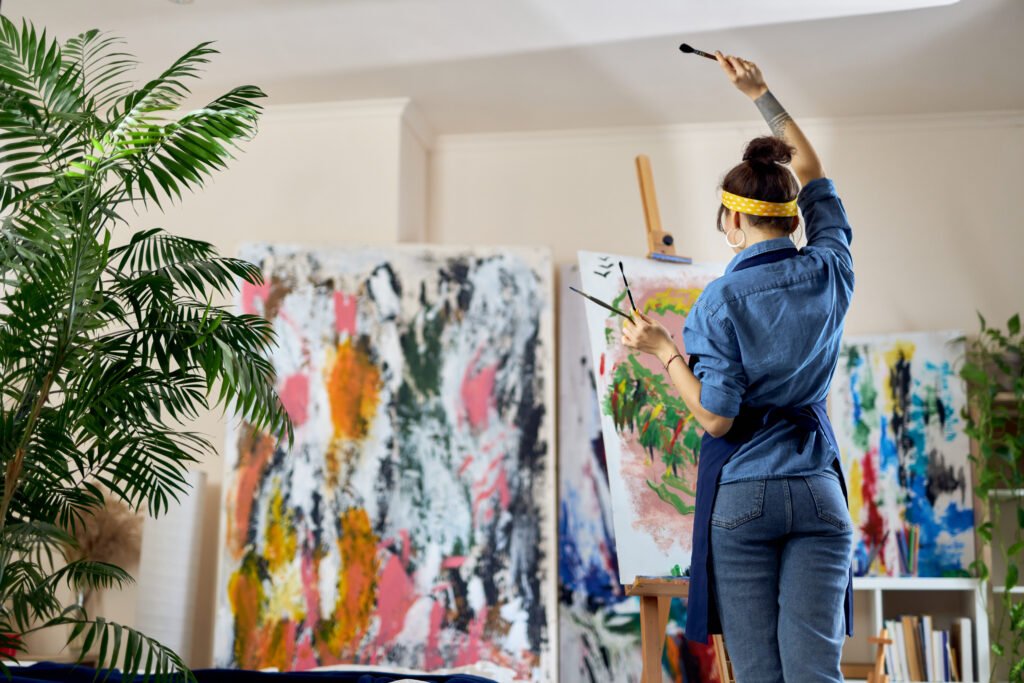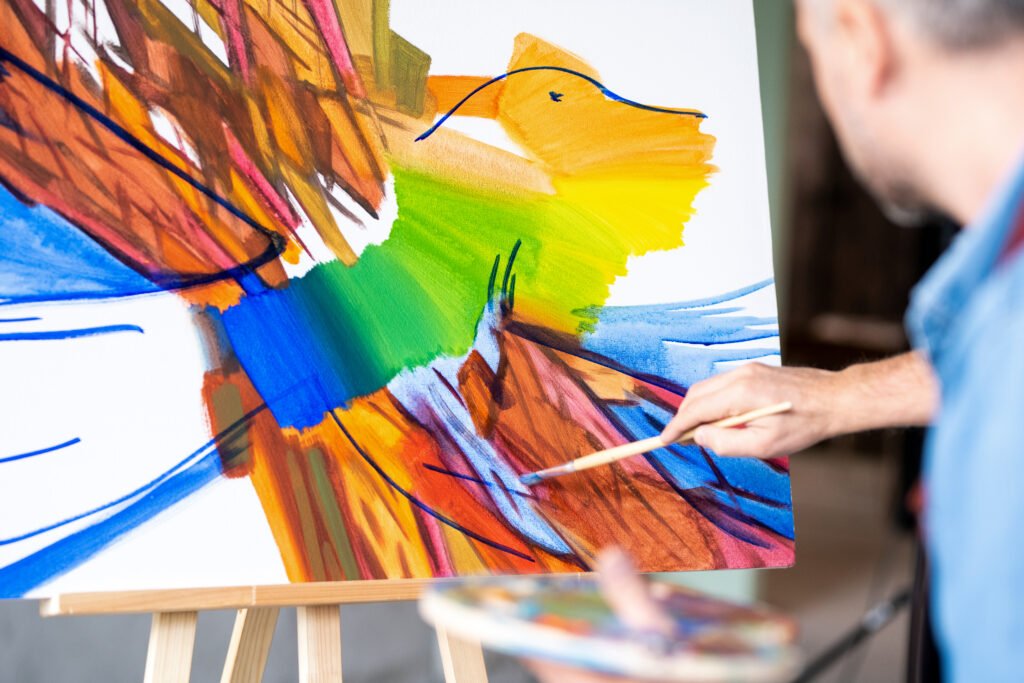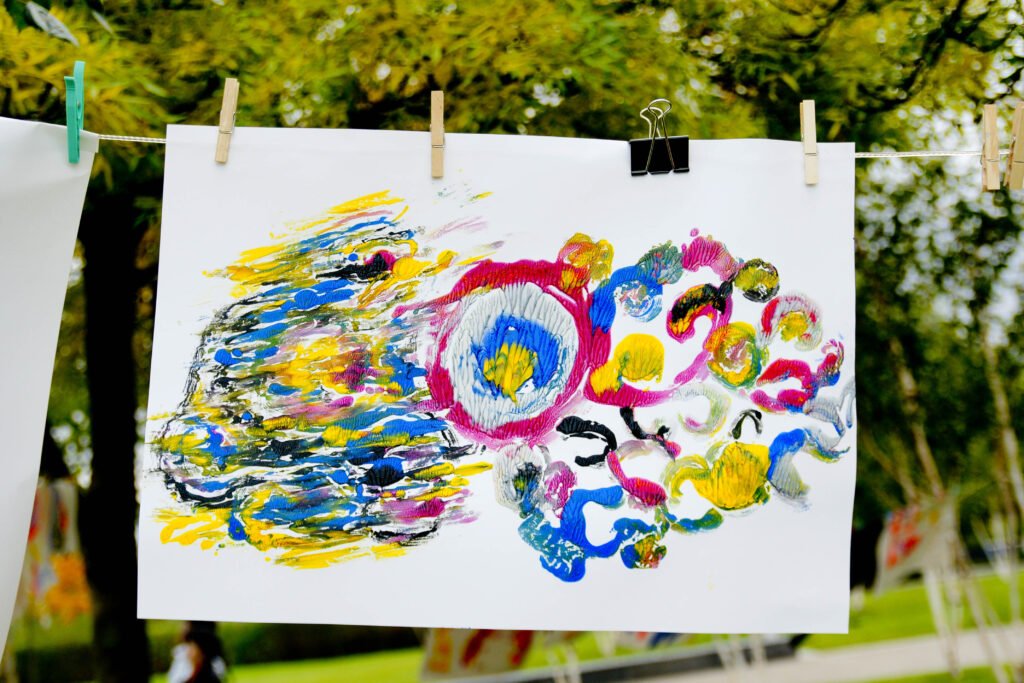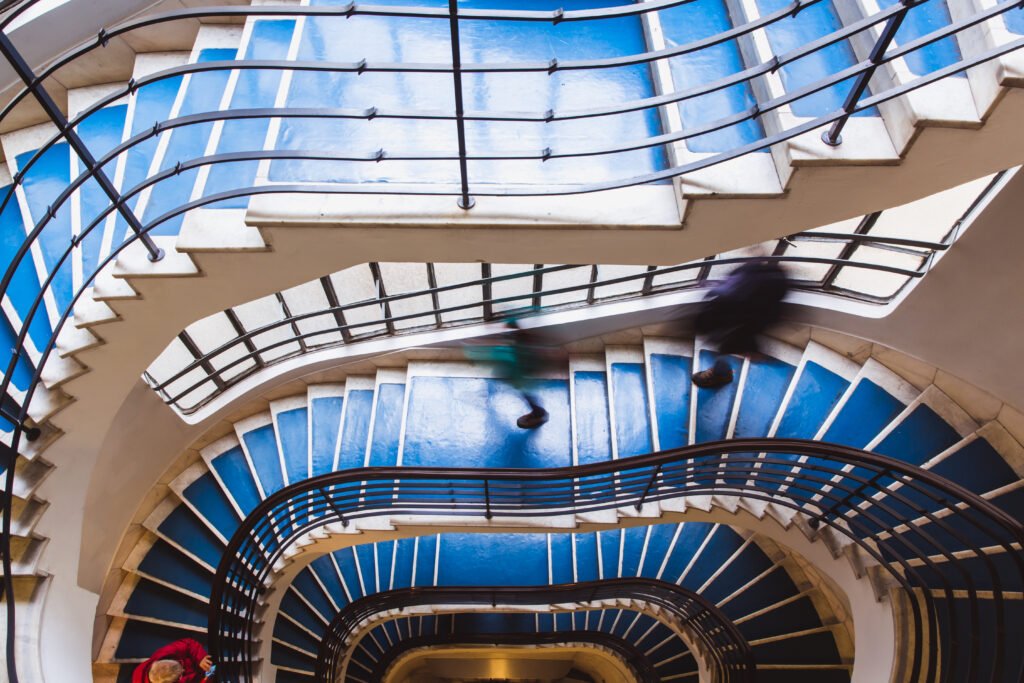Abstract art remains one of the most dynamic segments of the art market in the 21st century. Its aesthetic appeal, combined with the interpretative freedom it offers, attracts both experienced collectors and new buyers looking for unique pieces. Today, buying abstract art is not only an investment but also a way to connect with contemporary sensibilities.
With the expansion of sales channels and the digitalization of galleries, access to abstract art has become more democratic. Online platforms now offer works ranging from emerging artists to established names, making it possible to buy art online with safety and curated quality. This shift has renewed the way people consume art and increased the demand for abstract art in interior decoration.
New Directions in The Abstract Art Market
The growth of abstract art in the global market is directly linked to its capacity for adaptation and innovation. According to the Art Basel and UBS Global Art Market Report 2023, contemporary art — with abstract art as a major component — represented 55% of all art sales in 2022. This figure highlights the sector’s continued ability to attract significant investment through auctions and private sales.

Additionally, research published by Columbia Business School reveals that abstract artworks tend to appreciate more rapidly, especially those by artists active on social media and involved in international exhibitions. This trend motivates new collectors to seek out emerging artists and invest in their careers at an early stage.
Interest in buying abstract digital art has also grown exponentially. Digital art, particularly in abstract forms, has found a stronghold in specialized marketplaces and NFTs, expanding the reach and creative potential of this genre.
The Modern Collector’s Profile and The Search for Authenticity
Today’s art collectors are more diverse, informed, and digitally engaged. According to the Millennials and the Art Market report by ArtTactic, around 60% of art buyers under 40 consider the internet their main channel for discovery and purchase. These buyers often seek artists who address identity, cultural, or social issues, boosting the sale of abstract art with innovative visual language.
Conscious curation is another key factor. Many buyers prefer investing in artworks with verified provenance and in platforms that prioritize transparency. The best places to buy art now include respected virtual galleries like Saatchi Art and Artsy, which allow filtering by medium, price, and origin.
Decorating with abstract art has also become a trend that goes beyond aesthetics. Corporate environments, commercial spaces, and homes embrace abstract art to convey sophistication and creativity, turning art buying into an extension of one’s visual identity.
In short, the abstract art market is experiencing a period of vibrant transformation, shaped by innovation, technology, and a growing, engaged audience of collectors.



